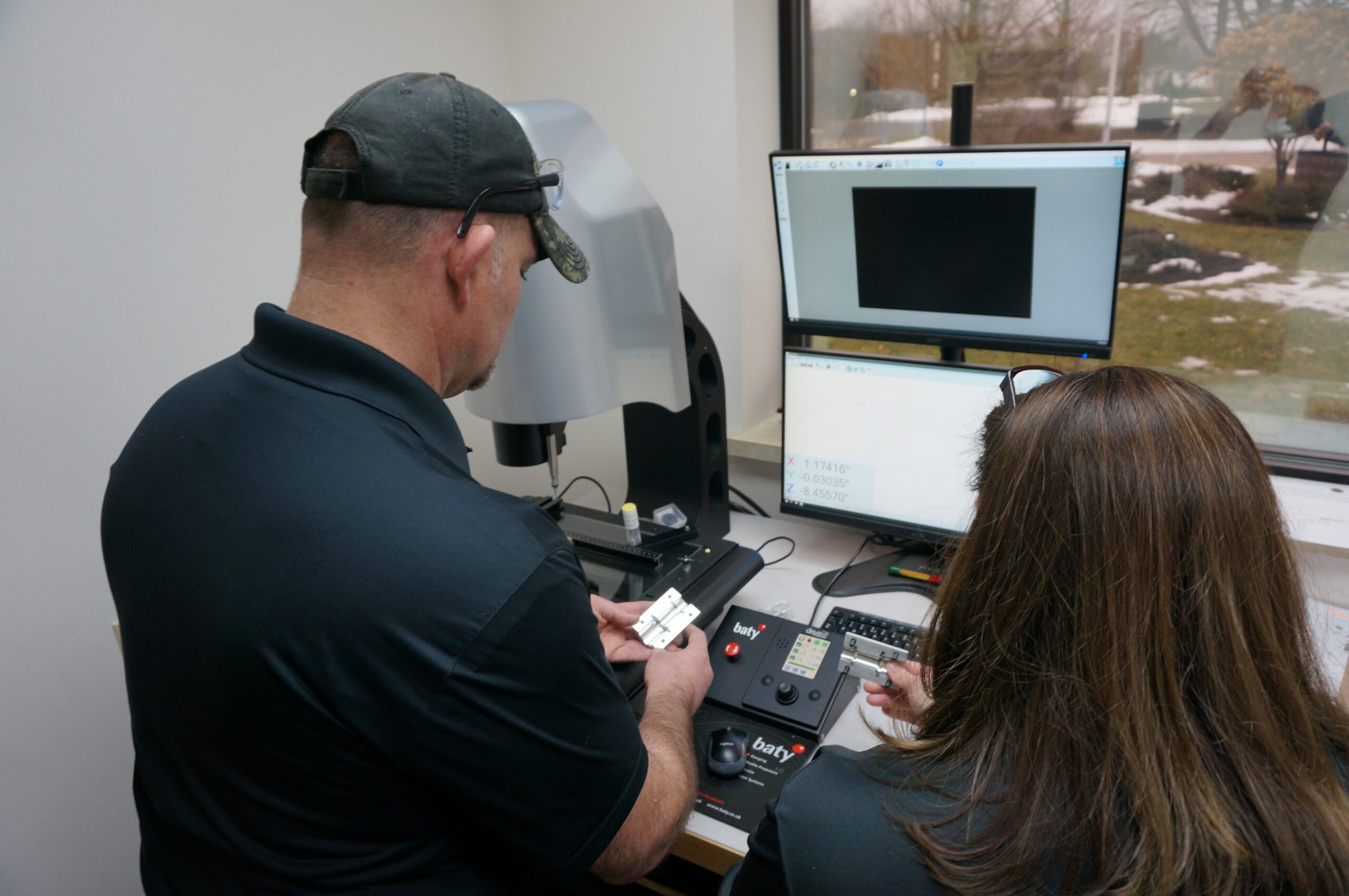The quality of machined components depends upon their design, with the complex geometries of some requiring simplification to ease production issues. When it comes to the design for manufacture and assembly (DFMA) software used by CNC machines, the key is to design products so that they’re easier, quicker, and less expensive to make. Working with CNC design software reduces costs by helping manufacturers catch errors in the design phase that are much more expensive to fix during production.
Minor improvements made during design help reduce costs later, speeding the production of customized precision parts. As many components require tight tolerances and sufficient robustness, these should be considered and tested during development when the costs are lower for fixing any issues. As such, CNC design software makes it easier to optimize the manufacturing process, thus reducing overall costs. When utilizing CNC machining, anyone involved in the design phase must contribute to avoiding common mistakes that can increase run time and costs.
The Relationship Between CNC Design Software & Production Capabilities
Much of the cost of CNC machining can be accounted for by the time it takes to program and set up the machine, not just the actual machining itself. The time spent on machining parts with a CNC machine also depends on what materials are used and how complex the part is, which often gets down to its geometry. The more intricate the geometry, the greater difficulty a workpiece will be to manufacture. Component designers understand these concepts, seeking to balance them within their designs.
Many of these guidelines are common sense, though sometimes it’s possible to push the envelope of what can be done when machining via CNC. Design software, however, makes such innovations easier, allowing manufacturers to examine a range of possibilities and then set aside designs that definitely won’t work. Yet there are some basic principles that those involved in designing precision components would do well to heed.
In general, those designing parts should consider the following:
- Aligning workpiece features with what the machine allows.
- Avoiding any special tooling that would slow production.
- Enabling tools with larger diameters to machine them.
- Keeping in mind how many axes upon which a part will be machined.
- Not incorporating cavities that are over four times the width of a workpiece.
- Submitting a technical drawing if working with a machinist.
While none of these guidelines are set in stone, considering them will help avoid problems during machining.
Ready to automate your next job?
VIEW OUR EQUIPMENT7 CNC Design Software Considerations for Machining
The four primary features influencing the time a component will remain in the machining process are accessibility, the complexity of the setup, reachability, and visibility. Accessibility largely depends on tool size and geometry, looking at whether a part can be machined while avoiding tool collisions. Complexity regarding setup considers the steps involved in fabrication, with tools sometimes needing to rotate to create or access certain areas. Reachability refers to the need for tooling to reach the component’s surface, with shorter tool lengths preferred. Visibility considers the view from the machine tool to the part, with components having higher visibility when the entire component can be seen from the machine tool’s point of view. Below are a few guidelines used with CNC design software to fabricate complex components and other machined workpieces.
1. Accuracy of Drawings
As with any design process, it’s important to have a clear idea of how the end product should look and perform. Easy-to-understand drawings that accurately describe parts help eliminate any guesswork during production.
When creating a blueprint for a part, designers should ensure the following:
- Depth-related information is properly mapped, leading to greater accuracy than correctly scaled drawings.
- Legibility of any sketches with well-defined data points.
- Materials and finishes are identified and clearly labeled.
- The shape and tolerance of the component are properly noted.
2. Standard Sizes for Holes
The standard size for hole depth is three times its diameter, as the cutting length for end mills tends to work best at this ratio. Limiting cavity depth to diameter generally shouldn’t exceed 4:1, and machined parts outside this range require either special tooling or a CNC machine with multiple axes. Doing this helps reduce the time required to machine a part, allowing for machining non-standard sizes without reamers or end mills.
3. Shaping of Drilled Holes
CNC design software needs to consider how surfaces will react when drilled. Drilled holes should ensure the bit will make a hole that contacts every part of the surface equally. As holes are easier to drill through a flat plane when perpendicular to it, a properly shaped hole will be less time-consuming and reduces expenses.
4. Non-Standard Finishing of Blind Holes
While holes drilled through a workpiece are normally preferred over blind holes, the finished surface of a component should pair with standard drill endings. As such, blind holes should have shallower, rather than pointier, drill endings. This matches standard drill points and ensures less wear, helping prevent additional steps that may contribute to the fabrication cost.
5. Rounding Inner Corners
Even with CNC design software, the round shape of CNC drill bits makes it hard to sharpen inner corners. Drill bits leave unprocessed spaces, known as the inside corner radius. Creating sharp edges takes other methods like electrical discharge machining, though these techniques are normally quite costly. For this reason, it’s best to avoid designs with sharp inner corners and instead design the corner radius slightly larger than the tool used. Were the corner radius to equal the tool’s diameter, this would result in the tool wearing prematurely.
6. Component Wall Thickness
The thickness of walls in a component is another important area of CNC design. Software may show a design works in theory, though in reality, the thinness of the wall provides insufficient stability for the part. When machining metal, creating thin walls causes chatter, negatively affecting the part’s surface finish and causing a loss of precision in the machining process. Thin walls for plastic parts also should be avoided, as they can lead to softening and deformation.
7. Avoiding Unnecessarily Tight Tolerances
While components for certain applications require tight tolerances, these sometimes need to be revised. Consider which features are most important for complex parts requiring tight tolerances, as it increases processing time and costs. CNC design software can analyze which features on a complex component should have tighter tolerances while ascertaining which features require less tolerance.
Ready to talk about your next project?
CONTACT US TODAYThe Staub Difference: DFMA Capabilities for End-to-End Solutions
Keeping ahead of competitors is integral in any industry, and a sector that relies on precision parts should have a partner that’s well-versed in CNC design software. Staub Inc. has both firsthand experience and vast technical knowledge that allows us to assess the manufacturability of complex parts. Through engagement with our design engineers, Staub will ensure a workpiece that can perform optimally for the application.
Staub’s DFMA capabilities include services at each step of the manufacturing process, including:
- Product design
- Material procurement
- Manufacturing and finishing
- Product assembly
- Packaging and distribution
Assessing manufacturability goes beyond a single workpiece, and as an evolving technology, DFMA may consider certain designs difficult to make. Yet, with new techniques and technologies, what was once nearly impossible and pricey may become commonplace and inexpensive. Staub understands this, keeping up with new methods and technologies to provide end-to-end CNC design software solutions.
Staub can help manufacturers:
- Cut shipping costs
- Eliminate unnecessary steps
- Improve quality
- Lower costs
- Reduce design flaws and errors
- Reduce inefficiency
- Speed time to market
To learn more about how Staub’s processes can help increase the efficiency of your manufacturing project, contact the experts at Staub today.



